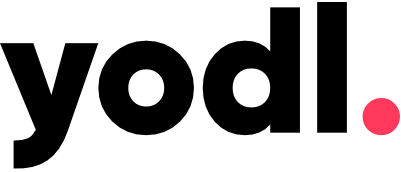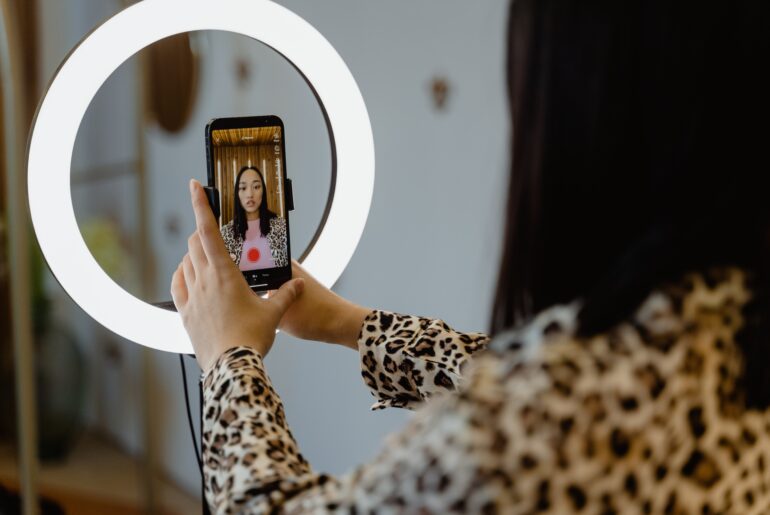Inevitably, you’ll see the tip “make great content” or “content is king” to get more followers and subscribers. It’s ambiguous, obvious, non-actionable, and 100% correct. There are so many factors it’s difficult to describe great content. Great content is engaging, interesting, energetic, slow-motion, simple, complex, emotional, funny, educational, shareable, memorable, relatable, and actionable. There isn’t a secret sauce, but fashion expert Tim Gunn has some well-thought-out advice:
Make it work.
Defining great content in detail is counter-productive, so we’ll define a strategy for making great content. Improving over time is the key. The journey is complex and occasionally backward but always leads to great content.

Have a Goal
Before making anything, define a goal for the content collectively and individually. What do you want to accomplish? New followers? More traffic? Conversions? Newsletter subscribers? What’s the endgame? Does the goal change over time?
After defining a goal, select a primary KPI (key performance indicator) and a secondary KPI. Primary KPIs must align directly with the goal. Secondary KPIs are goal adjacent. All actions should be focused on improving the primary KPI.
Our goal for this blog is to get users on our platform. We want people to read this blog, check out https://yodl.to (shameless plug), and convert to a user. Our primary KPI is conversions, readers to users. Our secondary KPI is page views on posts. Number of conversions is a useful metric but more insightful in the content of page views.
Create a Voice
Voice is simply how you convey your thoughts to the content’s readers (or viewers). Authenticity is crucial. If you try to copy someone else, you’ll probably do it poorly and inconsistently. Find your voice. Are you witty, serious, silly, crude, entertaining, fast-paced, slow and logical, or insightful? It will take time and a little experimenting to hone your voice. It’s not tangible, but you’ll know when it feels right. One trick for writing is reading out loud.

Know Your Audience
The first step to connecting with the audience is understanding them. Ask yourself, “Who’s my audience?” or “Who’s the audience I want?”. Continuously analyze your audience.
You need to understand their:
- Motivations
- Needs
- Behaviors
- Challenges
- Pain points
- Goals
It’s easy to get demographic data and hard to understand needs and goals. The only way to truly understand your audience is to engage with them. Answering questions and conducting surveys are great places to start. For more in-depth engagement, use Yodl. It’s a booking, video-chat, and payment platform for creators to generate income and engage with their subscribers and followers.
Find Your Medium
Medium is the content type you use to create. It can be a meme, Instagram Story, blog post, YouTube video or short, etc. You should learn as much as possible about the mediums you plan to create content for. What works for Instagram Reels doesn’t always work for YouTube videos and vice versa.
Identify what options and features are available on different mediums and platforms. Watch for updates to features, algorithms changes, and new mediums altogether. Trying new mediums and following trends keeps your content fresh and expands your audience. A current trend, partly thanks to TikTok, is short-form videos. Adopt the attitude: “Don’t knock it until you try it.” when you find a new trend or medium.
If you want to know more about creating Instagram Reels, check out The Reel Deal on Getting Discovered on Instagram.
Experiment
Experimentation aims to figure out what works for you AND your audience. The unique relationship between you and your audience means you cannot know what works until you test it. You cannot validate theories until you test them. Experiment with new forms of content, make adjustments in delivery, and ignore sound advice to try something new. A few experiment examples:
- Post at 3 pm instead of 10 am
- Write a comical blog post with a gif of the Kazoo Kid instead of a serious technical article
- Make a 60-second reel instead of the usual 12 seconds
- Film a YouTube short instead of a video
Experiments must have something to measure. There are hundreds of metrics to track: traffic, likes, conversions, etc. Give yourself plenty of time and data points to determine what’s working, what’s not, and why.
Learn
There are two types of learning. Learning a skill and learning from data. The quality of the content should improve over time. Learning about proper lighting or how to use Photoshop is totally in your control. Practice and improve these hard skills. Learning from your data requires asking the right questions. Why did this post do well? Why did this post do badly? Did change X help or hurt? Is it something else? Does my audience just not like the content? This type of learning is more like investigating and analyzing the results of the content.
For most, as the content gets better, learning slows or stops. This common failure prevents creators from making great content. Its effects ripple through the other aspects of the plan. Complancy with achieving your goal, honing your voice, understanding your audience, discovering new mediums, and not experimenting are all roadblocks to success. Continuously improving is how to make great content.
Yodl is a new way to transform your skills and knowledge into income.





